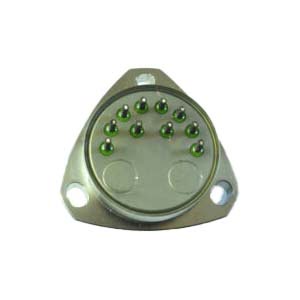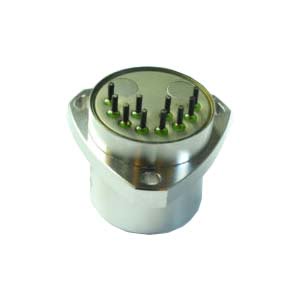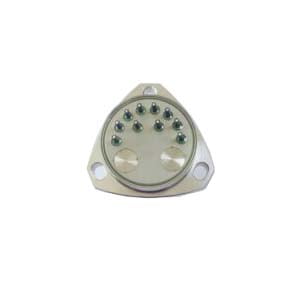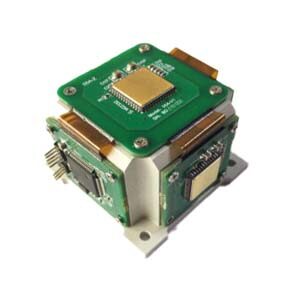Accelerometers and gyroscopes are both common sensors, but they measure different types of motion. Here is a brief description and the difference between the two:
An accelerometer is a device that measures the acceleration experienced by an object in space, including the acceleration due to gravity and the acceleration due to motion |. In fact, it can sense the acceleration in any direction (the acceleration of gravity is only the acceleration in the vertical direction of the surface). The accelerometer obtains the result by measuring the force of the component in a certain axis, in the form of the magnitude and direction of the axial acceleration (XYZ). This is somewhat similar to the gyroscope, but the gyroscope pays more attention to its own rotation (in-situ movement). The accelerometer is mainly to measure the force of the equipment, that is, the three-axis motion, although the accelerometer may also convert the possibility of angular speed in a small range, but the design principle seems to be more suitable for the judgment of space motion. They are commonly used to measure tilt, vibration, or impact of devices such as smartphones or driverless systems. For example, when you rotate the phone, the orientation of the screen changes because the accelerometer inside the phone detects the tilt of the device.
A gyroscope is a device that measures or maintains direction, based on the principle of conservation of angular momentum. The working principle of the three-axis gyroscope is to measure the Angle between the vertical axis of the gyroscope rotor and the device in the three-dimensional coordinate system, and calculate the angular speed, and judge the motion state of the object in the three-dimensional space through the Angle and angular speed. The three-axis gyroscope can simultaneously measure six directions, such as up, down, left, right, front and back (the synthetic direction can also be decomposed into three-axis coordinates), and finally determine the moving trajectory and acceleration of the device. That is to say, the gyroscope determines the current motion state of the device by measuring its own rotation state, whether it is forward, backward, up, down, left or right. Modern gyroscopes usually work by measuring angular velocity (i.e., rotational speed) rather than directly measuring direction. Gyroscopes are widely used in aviation, space and other systems to determine the direction or rotation of equipment (e.g. aircraft, satellites, smartphones).
The gyroscope measures the angular velocity of the body around an axis.When the gyroscope is used to measure the axial rotation angular rate of the aircraft body, the measured value is non-zero if the aircraft is rotating, and zero if the aircraft is not rotating.Therefore, the gyroscope on an aircraft with a 60-degree roll Angle has a value of zero for the roll Angle, and zero for the horizontal straight flight.The current roll Angle can be estimated by the time integral of the angular rate value, provided there is no accumulation of errors.The values measured by the gyroscope will drift over time, accumulating additional errors over minutes or even seconds, and eventually leading to a completely false perception of the plane's current horizontal roll Angle.As a result, gyroscopes alone cannot maintain a specific heading of an aircraft.
In a word, the accelerometer is correct in the long term measurement (determining the aircraft heading) and incorrect in the short term due to the presence of signal noise.Gyroscopes are more accurate in a short time and have errors with drift in a long time.Therefore, both are needed to ensure the correct course.
The difference between a gyroscope and an accelerometer is that the former can sense rotation, while the latter cannot. A three-axis accelerometer has the ability to measure the orientation of a stationary platform with respect to the Earth's surface. If the platform happens to be in free fall, then the acceleration will appear to be zero. If it were only accelerating in a particular direction, its acceleration would be indistinguishable from that provided by Earth's gravity. As a result, accelerometers alone cannot keep an aircraft in a particular direction.
Gyroscopes, on the other hand, have the ability to measure the speed of rotation around a particular axis. For example, if a gyroscope is used to measure the rate of rotation of the aircraft around the rolling axis, it will give a non-zero rolling value as long as the aircraft continues to roll, but if the rolling stops, it will show zero.
Another way to recognize the difference between a gyroscope and an accelerometer is to understand that a gyroscope uses the principle of angular momentum to help measure or maintain direction, while an accelerometer measures vibration. Another difference is that a gyroscope gives an indication of angular velocity, while an accelerometer measures linear acceleration.
As we can see, both gyroscopes and accelerometers have their own characteristics and functions. If used correctly, any one of these can make a crucial difference.
If you want to get more details about accelerometer, pls visit https://www.ericcointernational.com/accelerometer/quartz-accelerometer/
More Technical Questions
1.What can you do with an Accelerometer?
2.How does the Quartz Accelerometer Work?
3.Multi-Dimensional Understanding of High Precision Quartz Accelerometer
4.How do parameters affect the performance of the quartz accelerometer?
5.Application of Quartz Accelerometer
6.Why do we Need Accelerometer?
Products in Article







